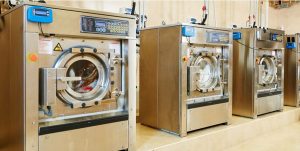The Coin Box Problem
Previously I posted about this topic and my plans. See The Post Here
The large capacity washers I have I my Laundromat are $6 per cycle. They are the largest machines in the City I am located in o they get a lot of use. The store only has two of this size machine so keeping them running is critical.
Due to the demand and some original design issues, the coin boxes are filling up between collections. In some cases, the coins have backed up into the coin drop mechanism and prevented more coins from being inserted.
How do you think a customer feels that has loaded their clothes and detergents into a washer, inserted $5 in quarters and can’t get any more to go in?
There are a few options to solve this issue:
1- CREDIT / DEBIT card acceptance at the washer or through a Loyalty card or Kiosk payment. While there are a number of benefits to this there are some other considerations.
Cost: Initial installation costs for any of these methods is high for a small store and usually 10 machines are the minimum required for a system to be installed.
Customer Acceptance: In my market very few of my Self Serve customers use credit or debit cards and have no interest in loading money onto a Loyalty / Laundry Card.
Customer Usage: The time required to convert customers to use a card, if they switch at all, may not eliminate the issue on busy weekends.
2- DOLLAR COINS OR TOKENS: I have made some changes in another of my Laundromats to a Dollar Coin on one machine, my attendants use them when needed on that machine and provide change to customers whenever possible. I will also be switching other machines soon.
In the Laundromat I am having problems in there is no attendant. I have 1 dual hopper changer that has quarters on both sides. Switching one side to $1 coins may cause more weekend trips due to a jammed machine. Adding an additional single changer is an option but not at this time.
3- MORE COIN CAPACITY: Due to the construction of the machine there are restrictions. I originally looked at removing the internal part of the coin box and having a chute that the coins would drop through into a safe in the base, similar to a vacuum at a car wash, the coins actually end up in a safe near the ground in the concrete base. It would be more of a hassle to empty the machine but the capacity could be a couple of weeks.
This method would not work due to the location of the drain valve and piping.
Installing a larger coin box was possible but only if the box length was changed. The manufacturer did not make a longer coin box so I modified what I had to do the job.
The first step is to make a bigger box.
Next is to make the changes to the machine so the box will fit and work correctly.
As you will see in the videos there are a few issues that need to be addressed and it took some time to get all the parts together and make the changes. The first machine took about an hour to get the work completed. The second one took about 15 minutes.
The videos show some of the steps and items to watch for.
Hint: Knock the rivets off from the inside of the coin box cover before you do anything else. There are a few that are exposed inside the machine and can be drilled out but a few need to be removed from the inside and is easiest with the box still supported by the back cover.
Each machine type will have some differences and may require some changes to this method but my overall cost to do make the changes was about $50 and the time was less than one trip to empty the box mid-week.
And Yes it does look like a stretch limo when you pull it out.
Please add any questions or comments below.
Ken







